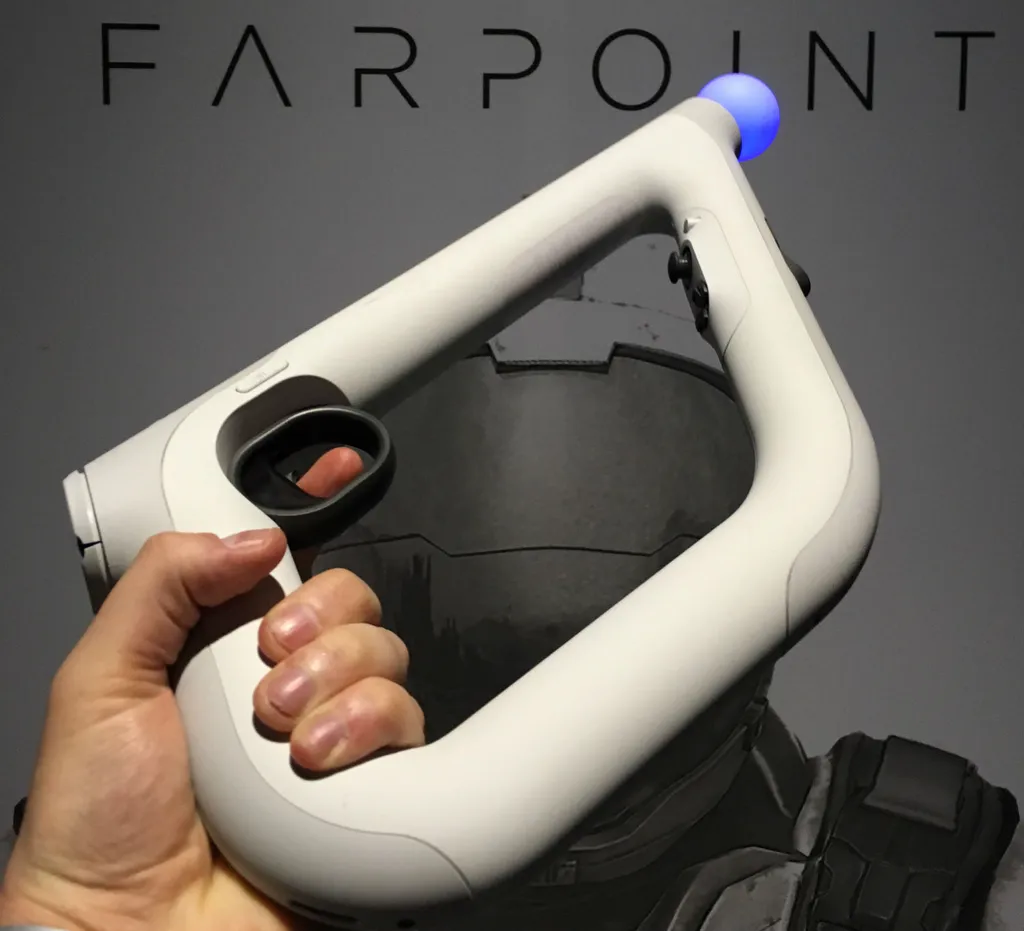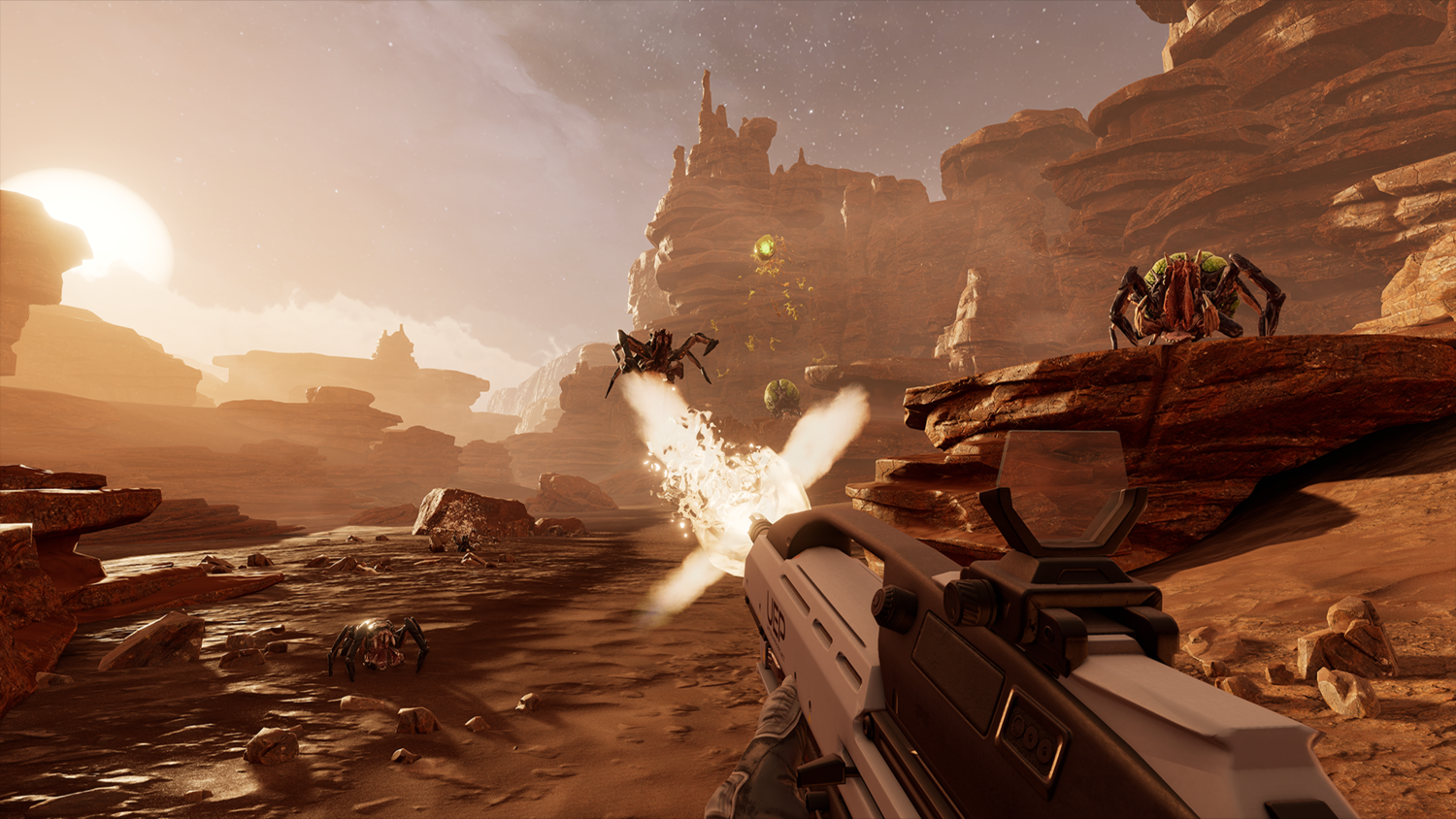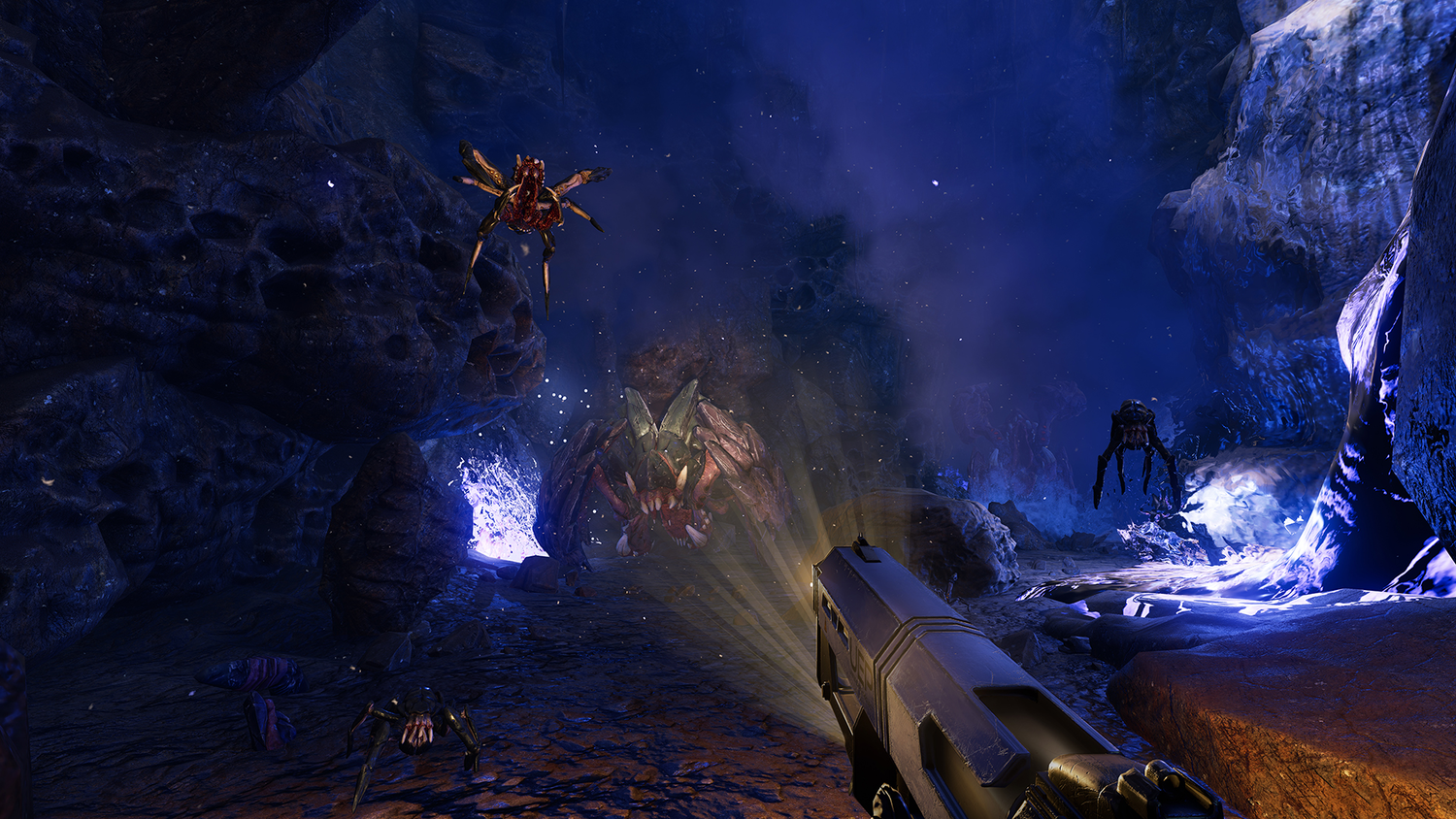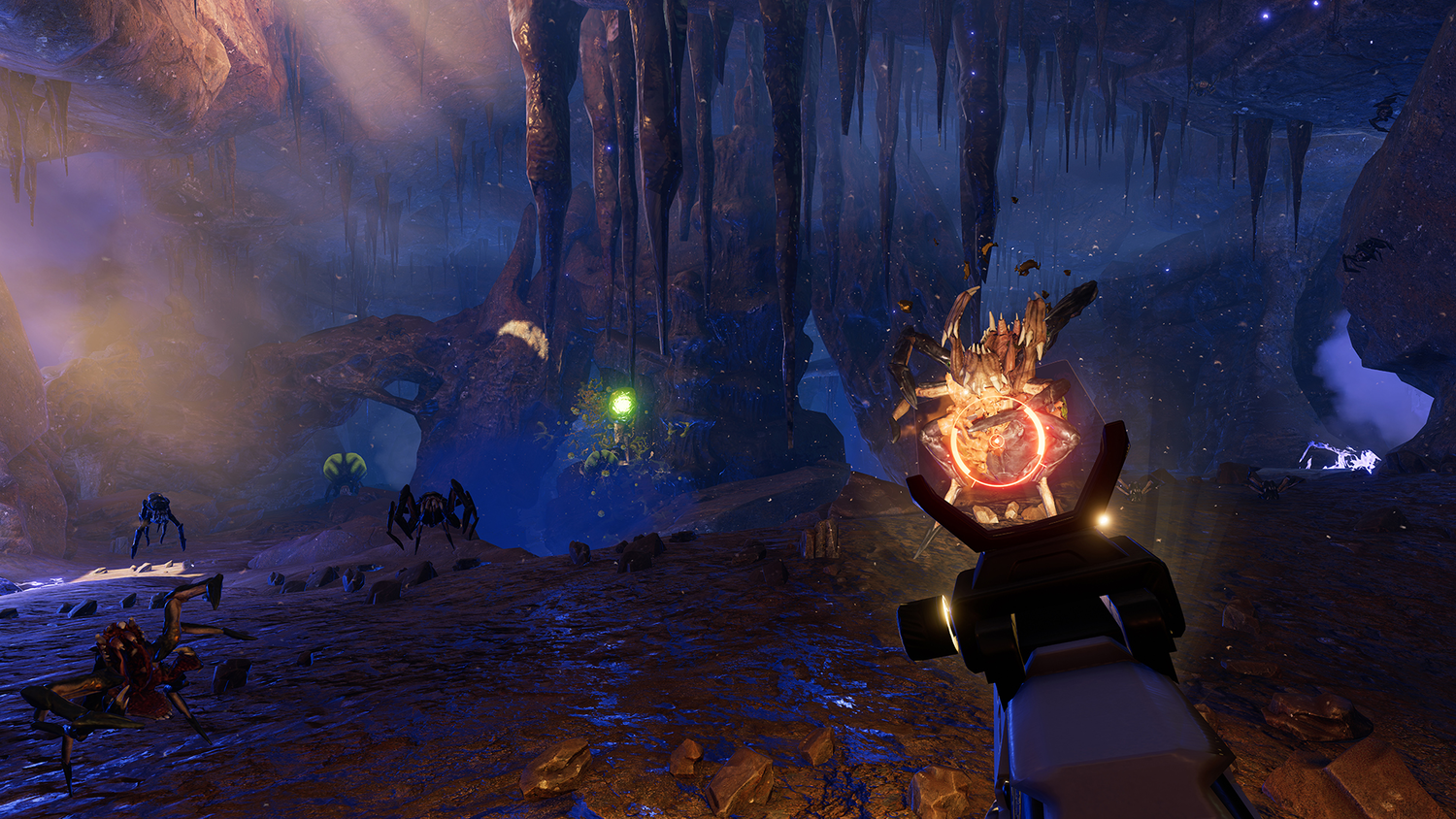Sony revealed the PlayStation 4 Pro console at a press conference last week. With roughly 2.3X the graphical power of the original PS4, Sony stressed the ability to play games in 4K resolution, with HDR, if your television supports those formats. Using that extra power for PlayStation VR was also mentioned, though it only got a fraction of the attention that the other capabilities did. But, there is no denying that PS4 Pro is important for VR — even if it failed to impress us initially.
“Across the board, it’s more crisp. That’s because we are rendering roughly twice as many pixels. So absolutely everything will look clearer,” said Greg Koreman, co-founder of Impulse Gear, the studio behind PS VR exclusive first-person shooter, Farpoint. “We are using Unreal Engine 4. We’ve done a little bit of work ourselves, but overall it was a really smooth transition — and it’s not exactly a transition. We are supporting both PS4 and PS4 Pro. So it was very easy to do it.”
Different developers will use the increased power in different ways — maybe more objects on screen or a better draw distance. But Impulse Gear decided for science fiction first-person shooter Farpoint to render the same assets as before, just at a higher resolution before pushing it to the 1080p lenses of the PlayStation VR.
The demo for Farpoint that Sony had on-hand at last week’s was the exact same level that Impulse Gear presented a few months before [E3 Hands-On and Develop: Brighton Hands-On,] except now it was running on PS4 Pro. What difference did the new hardware make? As far as I could tell, textures were definitely sharper and particle effects more discernible. The clarity of the image even helped gameplay as well.
“It’s important, for example, when you’re looking down the sights,” said Koreman. “You can see that much more detail at long ranges. That is a big part of playing a first-person shooter, being able to see and engage with the enemy. And having that extra level of clarity helps us out there.”
Making a game in VR over standard screens seems to be a choice about creating something more immersive and realistic. With the PS4 Pro enhancing VR, the graphical experience is now closer to the quality of PC games. This means games will be that much more immersive, giving developers a better chance of properly portraying their vision.
“The textures and the detail up close is going to be better so you will be even more immersed in this alien world. You look around at different elevations: enemies that fly, things that shoot at you from above,” said Koreman. “That’s just the nature of being in VR. You get transported to a completely different planet. All that together makes a very fun first-person shooter. And that’s exciting. A lot of people were skeptical of making an FPS in virtual reality. And we are showing it can be done.”
Impulse Gear’s decision to make its virtual reality game a first-person shooter was one that took a degree of vision. FPS is considered a difficult genre to translate to VR, with a greater likelihood of players feeling nausea from the motion. But these developers knew what they wanted to make.
“One of our founders made the SOCOM series, so we have a lot of experience making these type of games,” explained Koreman. “The team is very passionate about first-person shooters. The entire team loves playing them. So it make a lot of sense to do that. Along with the challenges involved, we knew we could do it. We wanted to make something that the hardcore first-person shooter crowd would really enjoy. If you’re an FPS player, you’ll have the full game experience, all of these things you kind of expect from a shooting game.”
Moving your body in VR makes dodging enemy attacks or engaging in a gunfight from cover feel more real. And actually aiming with a gun, albeit one made of plastic, puts you there in the action. Even that changes the nature of a playing an FPS.
Koreman said, “You are holding the [PS VR Aim] controller in the game. I will be running through the world and I will hear something in my ear. I don’t even need to look because I know what the enemy sounds like and I know where it is, based on listening to it. I can aim and shoot at it without actually looking at it. Which is something brand new for games.”
With your posture and movement tracked, and then the aiming of the gun being tracked, the the artificial conditions of a shooter are replaced with real experience and actual physical skill. The shooter isn’t about the twitchiness of pressing buttons, but being there and acting.
“In later levels, we have some enemies that turn it into more of a cover-based shooter. And you can actually get down behind cover just by moving your body. You can blind-fire and do all of these things very naturally because of the nature of the tracked controller. That really helps to solve a lot of the problems of making a first-person shooter in virtual reality,” said Koreman.
From the demo on PS4 Pro, it looks like Impulse Gear succeeded in getting a shooter right for virtual reality. The control of the game have been nailed down, the graphics have gotten better, and the resulting immersion should please VR and FPS fans alike. And the game isn’t even done yet.
Koreman said, “We are excited about pushing it even further. This has been the first showing of Farpoint on the PS4 Pro, but as we get closer and closer to the launch, we will continue to refine and really push the hardware to its limits…If you already have a PlayStation 4, the experience is still excellent. So if you want to do that, go grab the PS VR and you can play day one. If you want to get the PS4 Pro, it’s obviously an even better experience. It’s really up to you. We have stuff for all different budgets.”
—
Kevin is a freelance writer with work appearing in outlets such as Geek & Sundry, Kill Screen, and Fast Company. Follow him on Twitter: @khohannessian.





























